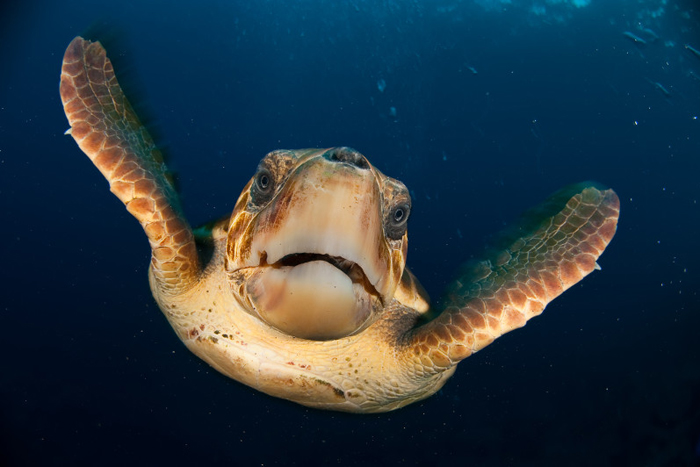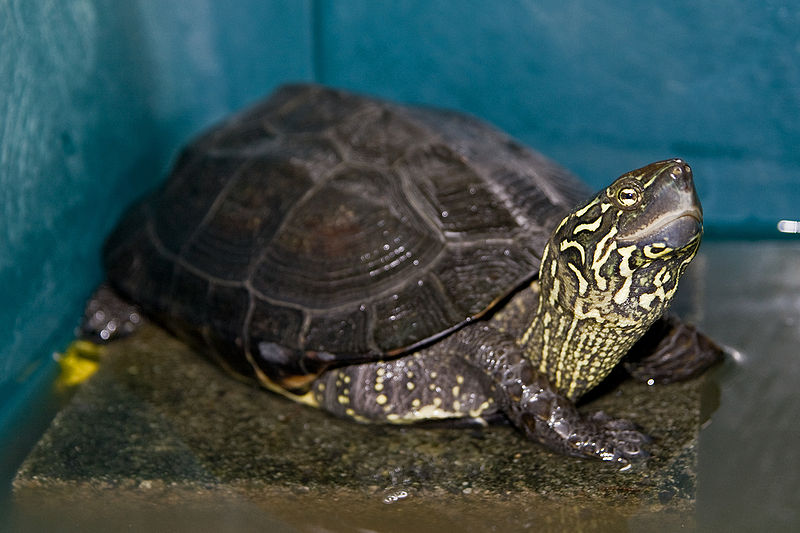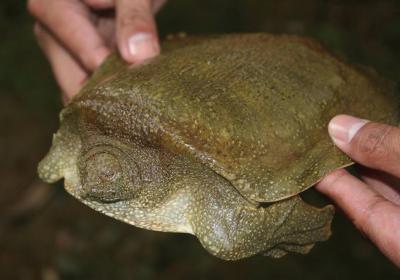Turtle Facts

Turtles are reptiles with hard shells that protect them from predators. They are among the oldest and most primitive groups of reptiles, having evolved millions of years ago. Turtles live all over the world in almost every type of climate.
According to the Integrated Taxonomic Information System (ITIS), the turtle order, Testudines (or Chelonia), splits into two suborders, Cryptodira and Pleurodira, and then further splits into 13 families, 75 genera and more than 300 species.
"Turtle," "tortoise" and "terrapin" are often used interchangeably as synonyms, but there are distinct differences between the types of chelonians, according to the San Diego Zoo:
- Turtles spend most of their lives in water. They are adapted for aquatic life, with webbed feet or flippers and a streamlined body. Sea turtles rarely leave the ocean, except to lay eggs in the sand. Freshwater turtles live in ponds and lakes, and they climb out of the water onto logs or rocks to bask in the warm sun.
- Tortoises are land animals. Their feet are round and stumpy, adapted for walking on land. They also dig burrows with their strong forelimbs, and slip underground when the sun gets too hot.
- Terrapins live on land and in water, usually in swamps, ponds, lakes and rivers.
Size
With so many different types of turtle, there is no average size. The largest sea turtle species is the leatherback turtle. It weighs 600 to 1,500 lbs. (272 to 680 kilograms) and is about 4.5 to 5.25 feet (139 to 160 centimeters) long, according to the World Wildlife Federation (WWF). The Galápagos tortoise grows up to 6 feet (183 cm) long and 573 lbs. (260 kg), according to the San Diego Zoo. The largest freshwater turtle in North America is the alligator snapping turtle. It can grow to 2.5 feet (80 cm) long and weigh as much as 200 lbs. (91 kg). The Yangtze giant softshell turtle is the largest softshell turtle. It measures up to 3.6 feet (1 m) across, and weigh up to 309 lbs. (140 kg).
One of the smallest turtles is the speckled Cape tortoise, according to the San Diego Zoo. Its shell is 3.1 inches (7.9 cm) long. It weighs about 5 ounces (142 grams).

Shell
A turtle's shell is a modified ribcage and part of its vertebral column, according to the Animal Diversity Web (ADW) at the University of Michigan. The top part of the shell is called the carapace, and the bottom is called the plastron, according to the San Diego Zoo. The shell is made up of about 60 bones that are covered by plates called scutes. Scutes are made of keratin, the same material that makes up humans' fingernails.
Many turtles are able to retract their heads and feet into their shells. Turtles are placed in the two suborders based on the method of retraction, according to ADW. Pleurodires pull their heads in sideways; cryptodires draw their heads straight back into the shell. Sea turtles have lost the ability to retract their heads.
Habitat
Turtles are very adaptive and can be found on every continent, except Antarctica. Most turtle species are found in southeastern North America and South Asia. Only five species live in Europe, according to Drs. Foster and Smith, a veterinarian business based in Wisconsin.
Here are some examples of different types of turtles and where they can be found:
- Sea turtles can be found in the Coral Triangle, an area that includes the waters of Indonesia, Malaysia, the Philippines and Papua New Guinea; coastal East Africa; the Mesoamerican Reef in the Caribbean; the Galápagos Islands; and the Gulf of California.
- The African helmeted turtle is the most common turtle in Africa, according to Animal Planet. It is a hunter-scavenger that eats young birds and small mammals. It steals bait from fishermen's hooks. It also releases a foul-smelling liquid from glands in its legs.
- Roti Island snake-necked turtles are found only on Roti Island, a 62-square-mile (161 square km) island in Indonesia, according to the San Diego Zoo.
Habits
Turtles are not social creatures. While they typically don’t mind if there are other turtles around them, they don’t interact or socialize, according to Encyclopedia Britannica. Most turtles are active during the day, spending their time foraging for food.
Turtles are not silent creatures. Some sound like electric motors, some sound like belching humans and some bark like dogs. The red-footed tortoise from South America clucks like a chicken.
Diet
Most turtles are omnivores; they eat a variety of different things, depending on their species. Musk turtles eat mollusks, plants, small fish and insects. The cooter turtle is mostly vegetarian, and the green sea turtle only eats grasses and algae.
The alligator snapping turtle lures in fish with its tongue, which looks like a worm. It wiggles its tongue to attract a hungry fish and then snaps down on it with its strong jaw. It also eats aquatic plants, snakes, frogs, fish, worms, clams, crayfish and other turtles.

Offspring
All turtles lay eggs. They find a place on land to lay their eggs, dig a nest into the sand or dirt and then walk away. No species of turtle nurtures their young. [Photos: Thousands of Baby Turtles Hatch in Brazil]
Turtles reach the age to mate at different times. Some come of age as young as a few years old, while others don’t reach sexual maturity until around 50 years has passed.
Some species fight for the right to mate with a female, while others seduce her with a mating ritual. To mate, male and female turtles intertwine their tails so that their shell openings line up perfectly.
Sea turtles travel from the ocean to lay eggs on beaches. Usually, sea turtles lay around 110 eggs in a nest, though the flatback turtle only lays 50 at a time.
The temperature of the sand affects the sex of the turtle. The perfect beach temperature produces an equal number of male and female offspring. Due to rising temperatures, too many sea turtle females are being born, contributing to the decline in species numbers, according to the Sea Turtle Conservancy.
Classification/taxonomy
Here is the taxonomy of turtles according to theIntegrated Taxonomic Information System (ITIS):
- Kingdom: Animalia
- Subkingdom: Bilateria
- Infrakingdom: Deuterostomia
- Phylum: Chordata
- Subphylum: Vertebrata
- Infraphylum: Gnathostomata
- Superclass: Tetrapoda
- Class: Reptilia
- Order: Testudines (also called Chelonia)
- Suborders: Cryptodira, Pleurodira
- Families: 13, including Chelydridae (snapping turtles), Dermochelyidae (leatherback sea turtles), Trionychidae (soft-shelled turtles), Testudinidae (tortoises)
- Genera & species: There are 75 genera and more than 300 species.
Conservation status
According to the International Union for Conservation of Nature (IUCN), many turtle species are listed as threatened, endangered or critically endangered. For example, the ploughshare tortoise and radiated tortoise are estimated to be extinct in the next 45 years.
Other facts
The earliest known turtle fossils are from the Triassic Period, about 220 million years ago. Anatomically, they are nearly identical to modern turtles., according to ADW.
Sea turtles have been around for 120 million years, according to a recent analysis. The now-extinct Desmatochelys padillai turtle skeleton was found in Villa de Leyva, Colombia, and is 25 million years older than the Santanachelys gaffneyi turtle from Brazil that previously held the record for the world's oldest sea turtle fossil. "The cool thing about this turtle is that it's really old, but it's not very primitive," said James Parham, an assistant professor of geological sciences at California State University, Fullerton, who inspected the fossil with other researchers.
A pair of Russian tortoises went into space. In 1968, the Soviet Union launched Zond 5, a space probe that was the first spacecraft to orbit the moon. It returned safely and the tortoises survived. They had lost about 10 percent of their body weight, but they remained active and showed no loss of appetite, according to NASA.
Additional resources
Get the world’s most fascinating discoveries delivered straight to your inbox.

